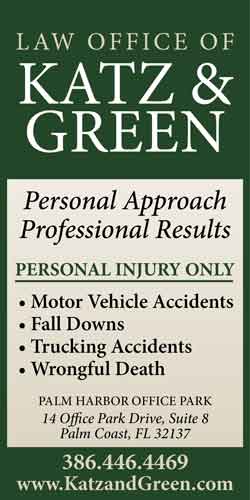
May 7, 2025 Update–The Flagler County burn declared on April 23 and in effect countywide has been extended through May 14, the county announced today even though some areas of Flagler County started receiving rain Wednesday.
“Until such time as we have accumulated enough rainfall, countywide, that significantly reduces the drought index, we will need to leave the Burn Ban in place,” said Emergency Management Director Jonathan Lord. “Additional rain is forecast, so we’ll hope for the best.”
The previous article is below.
![]()
April 23, 2025–Flagler County and Palm Coast have jointly issued a seven-day burn ban starting today as a result of increasingly dry conditions, which heighten the likelihood of wildfires. The ban is countywide, applying also to Bunnell and the barrier island, including Flagler Beach.
The fire danger index is moderate for the county. The fire danger is high for southwest Florida. Fifteen counties have issued burn bans, all to the south of Flagler, including Volusia.
There is one active, 1-acre fire in the county, at its southwest end. It is contained, according to the Florida Forest Service.
In Palm Coast, water use is rising to alarming levels, a city official said, which could hinder firefighting efforts in big wildfire emergencies.
The burn ban prohibits the following:
- Discharge/use of fireworks, sparklers, flares, or other items containing any “explosive compound”
- Open burning, including the use of fire pits and containers
- Outdoor cookers and grills unless continuously attended by an adult
- Throwing matches, cigarettes, or other burning materials from vehicles
- Parking vehicles with catalytic converters in high grassy areas
“We’re not in the mode where we need to be alarmed today, but [it’s] a great time for us to ensure that our plan is prepared for individuals and as a community,” Palm Coast Fire Chief Kyle Berryhill told the City Council Tuesday evening as he let them know of the coming burn ban.
“In the state of Florida, we’ve experienced some pretty extreme wildfire conditions this year so far, and in Flagler County, we’ve kind of been on the northernmost edge of that,” Berryhill said.
The drought index that measures moisture in the soil on an 800-point scale, with 0 being “swampy,” as Berryhill put it, and 800 being desert-like conditions, is approaching 500 in Flagler County as an average, with the southern half of the county well into the 500s and the northern half a bit less. Bunnell was at 488 today.
“The conditions are becoming favorable for rapid fire growth so this action will help,” Flagler County Fire Rescue Chief Michael Tucker said in a county release. “In addition to the ban on burning, remember that a good offense is the best defense. Clear the area around your house of anything that will go up in flames easily – including stacks of firewood, portable propane tanks, and dead, dry vegetation.”
There is not a drop of rain in sight in the National Weather Service’s forecast for the next seven days in Flagler County. Instead, the weather service projects mostly clear, sunny, dry days, which will keep pushing the drought index up.
The Palm Coast Fire Department has plans in place to “staff up,” Berryhill said, but it’s not near that point right now.
Berryhill said the fire department has been in contact with the city utility to make sure there’s an adequate water supply to protect residents and property.
Residents are not helping. “We did hit 12.1 million gallons per day over the weekend in water, and that is extremely high,” Acting City Manager Lauren Johnston said of water consumption in the city.
Last week, Gretchen Smith of the St. Johns River Water Management District told the council that “irrigation is a big challenge. It’s more than 50 percent of the water used in a household.” Smith cited a University of Florida briefing that found that the “minimum water use per irrigation event would be 991 gallons, but a typical system could use more than double this conservative estimate,” on average lot sizes of 8,079 square feet. That’s the typical lot in Palm Coast.
The city is calling some homes with unusually high water usage and asking them to reduce their lawn watering schedule, Johnston said.
“There are some things that residents can do, like just general policing of their grounds, ensuring that they’re not doing things like storing their grill underneath their soffit, create a defensible space,” he said.
The rule of thumb for taking personal protective measures, accepted by a variety of fire prevention agencies, including the National Fire Protection Association, is that all flammable items within 30 feet of a structure should be removed. Homeowners should clear roofs, eaves, gutters, wood decks and patios of leaves, needles, and other debris.
“Additionally, do not store things under decks or porches, and consider using rocks or gravel in those areas instead grass or mulch,” Tucker said. “Wood-driven fires, like brushfires, create embers that can be carried quite far, and tend to find their way to the same nooks and crannies where leaves accumulate.”
Barbecue coals should be fully extinguished before adding them to garbage receptacles.
“Part of why we have a city 25 years ago is that it’s our mission to not ever have another conflagration like we had” in 1988 and 1998, Berryhill said. The county was evacuated in 1998. “So we’re working hard to continue that.” Since then of course the density of woods in the county, and in Palm Coast especially–what Berryhill referred to as the “wildland urban interface areas” has been replaced by houses, asphalt and lawns.





























Deborah Coffey says
Well, I hope the city calls us! Our bills are running $240-$280/month and the usage for recycled water for the lawn this past month was 44,550 gallons…almost impossible. Three months ago, we paid a sprinkler company to come and check for a leak. None. Then, we had the city come to make sure our meter was working properly…nothing wrong there, either. We haven’t changed our sprinkler system days and times in 3 years. So, what is going on? Is the Water Department just making up bills because it needs more money?
JimboXYZ says
But we’re getting charged more for water with the new base service & rate increases. How can this be that the water supply is low ? all of these improvements how can water quality & supply be this bad ? I feel or Deb Coffey, they replaced my meter last month, I have no sprinkler system for the lawn, I let nature do it’s thing for rain or even humidity & dew point where the moisture accumulates on each blade of grass. Planet Earth will take care of itself. Next thunderstorm/showers forecast won’t be until next Monday afternoon according to accuweather.
NJ says
LOVE houses built on 40ft wide house lots!!! BEWARE all you New Home Owners with your wood framed homes on tiny lots!!
FLF says
Go Team, conserve water so we don’t run out! Make sure you stuff those pamphlets in the 3000 new mailboxes you’re adding to the population. The good news is once the area is completely deforested and covered with asphalt the fire risk should go down and just be limited to lightening strikes and kitchen fires.
celia pugliese says
We consume the same amount of water as last year at this time like probably most Palmcoasters do. The high water consumption alledged are all the new consumers given this allowed ridiculous growth with insufficient utility and other infrastructure, The only different thing lately in our utility provided water is the nasty yellowing color and its diminished flow strengh out of the faucets and this is when I recall Mayor Norris asking for a moratorium vote that his council colleages failed! Now here comes the news and these city administrators accusing us of “Residents are not helping” and “We did hit 12.1 million gallons per day over the weekend in water, and that is extremely high, Acting City Manager Lauren Johnston said of water consumption in the city” Mrs. Johnston is not the residents consuming more, is the amount of consumers you added to the already insufficient failing system given the ridiculous growth approved! Unfortunately without the heavt equipment displayed boycoted moratorium defeated, now is the cry wolf and us residents fault/blamed? Hello! Can you figure out that residents are watching their water consumption like a Hawk with the cost per gallon? Lets stop spreading falsehood please! Now lets see the arrows…
Billy says
Deforestation and development of the wetlands is going to cause a lot of havoc with the weather in this area. Eventually the area will be a desert covered with asphalt and concrete ! It’s going to look like downtown LA very very soon
B Slapper says
Flagler County Fire Chief Michael Tucker and Palm Coast Fire Chief Kyle Berryhill:
Why aren’t they banning student flight schools training over our area, if one of
those tin can cessas come down in a wooded area and burst into flames there goes
PC with this drought. Why is it that , we the homeowners and tax payers are the
only ones who have to cut back, which is fine, as we pay higher water bills but
Roy Sieger and the FCBOCC need to get their touch and go figures into the
FAA for millions in grant funding, so this logic of thinking is ok but don’t
water your lawns. These commissioners need to be unseated.
Retired says
There was a big fire in Daytona North Tuesday. I called it in.One street over from my house. They had fireflight here with the Bambi bucket dumping water and a forestry dozer plowing a line to stop it. While the helicopter was flying over the fire 2 EMBRY RIDDLE PLANES kept flying over his head. Called the Po Po but they cant tell me what started it ? 🤔
JaceyJones says
Well, Palm Coast continues to water their little grassy, tree lined areas every single night, rain or shine. I see it happening at night while driving. When I called them about it they said it’s on ‘automatic’. Oh, they also use ‘grey’ water. Also, why is the water turning so yellow? I have to flush the toilets in Wal-mart and at the Bowling Alley several times to make sure. Awful.
FlaglerLive says
The irrigation uses recycled, or “reuse,” water, not potable water, that would otherwise have to be dumped in fields or end up in the Intracoastal.
T says
How many gallons does palm coast city use day and night I’ll wait for reply